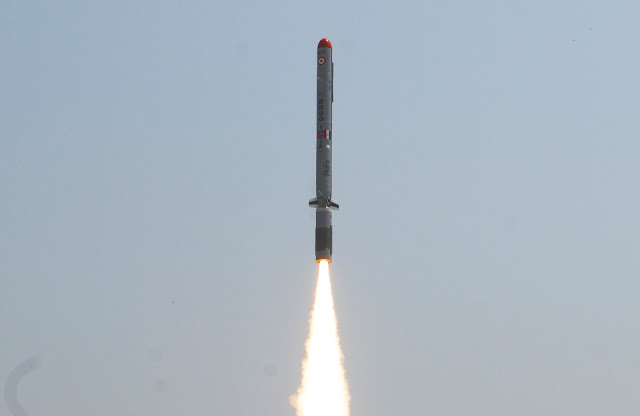India successfully carried out the second test firing of indigenously developed Nirbhay cruise missile, after the maiden partialy succes...
India successfully carried out the second test firing of indigenously developed Nirbhay cruise missile, after the maiden partialy successful test firing in March 2013.
The test was conducted from the Integrated Missile Test Range in Chandipur, Odisha.
The nuclear capable subsonic cruise missile can carry out precision strike against enemy target over 1000 km away. Nirbhay flies a terrain hugging path to evade radar detection and impart a element of surprise.
The two stage Nirbhay took off from a mobile launcher using its solid rocket motor booster. As it achieved designated altitude and velocity, the booster motor was jettisoned and the Russian Saturn built 36MT turbofan engine took over the propulsion, begining the cruise stage along with deployment of wings upon by commands generated by the onboard computer (OBC) to stabilise the flight.
Guided by a highly advanced inertial navigation system indigenously developed by Research Centre Imarat (RCI) the Nirbhay continued it's flight that lasted a little over 1hour and 10 minutes.
The missile achieved an Circular Error Probability (CEP) accuracy of less than 10 meters and covered a distance of more than 1000 km.
Nirbhay was developed by Aeronautical Development Establishment (ADE), a Defence Research and Development Organisation (DRDO) laboratory based in Bangalore.
The missile also has loitering capability, that allows it to go round a target and perform several manoeuvres before re-engaging.
Throughout the flight, the missile was tracked with the help of ground based radars and watched by an Indian Air Force aircraft.
The maiden flight of Nirbhay in 2013 was aborted in its final cruise stage after the ring laser gyro (RLG) in the inertial navigation system malfunctioned.
Indian arsenal currently has only the 290 km range supersonic BrahMos cruise missile jointly developed with Russia.











